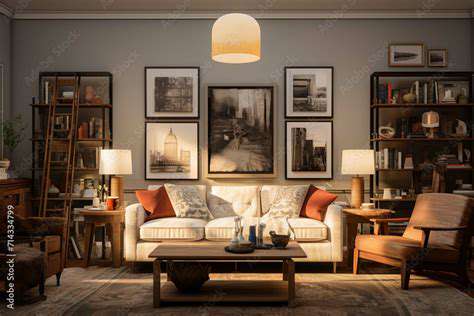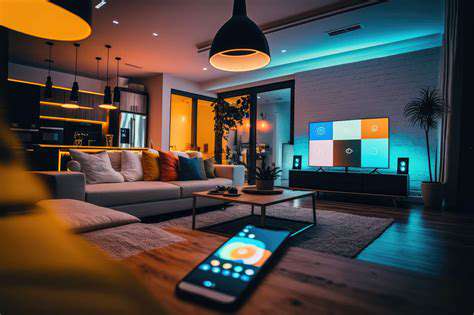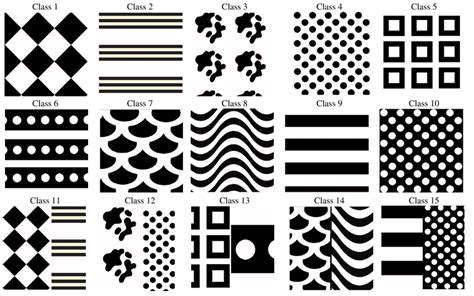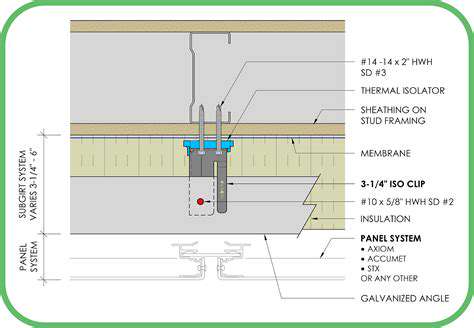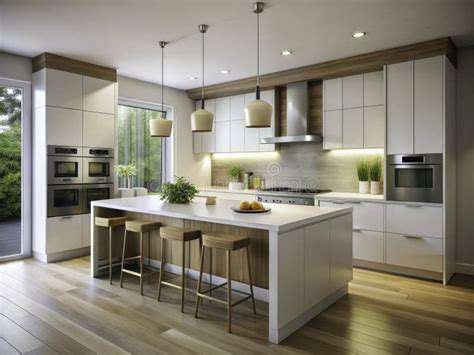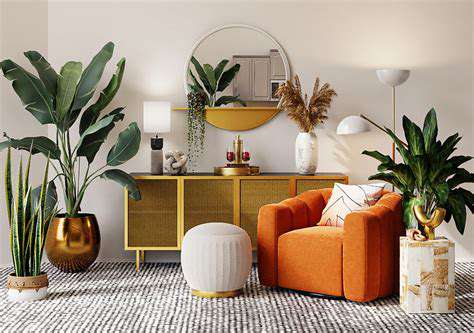How to Achieve a Seamless Full Package Home Design
Maximizing Visual Appeal
Crafting an inviting space requires more than just functional furniture placement—it demands a keen eye for visual harmony. A well-orchestrated layout blends color theory, lighting dynamics, and spatial awareness to create rooms that feel both purposeful and inspiring. Thoughtful use of complementary hues and strategic accent placement guides the viewer's gaze toward intentional focal points. Lighting—whether streaming through windows or artfully arranged fixtures—serves dual purposes: it establishes ambiance while showcasing architectural details or statement furnishings.
Furniture arrangement follows deliberate logic. Maintain clear circulation paths by avoiding cluttered walkways. Instead of filling every square foot, designate purposeful zones—perhaps a sunlit reading corner here, an intimate conversation area there. This zoning technique transforms empty floors into living vignettes that balance utility with beauty.
Prioritizing Functionality
Truly exceptional designs marry practicality with aesthetics through innovative storage solutions. Built-in cabinetry that disappears into walls, floating shelves that display curated objects, or multi-purpose ottomans with hidden compartments—these elements maintain clean sightlines while accommodating life's necessities.
Consider how each area will actually be used. Home offices thrive with ergonomic work surfaces and accessible filing systems, while family rooms demand durable fabrics and flexible seating arrangements that adapt to movie nights or casual dinners. Visual appeal emerges when form follows authentic function.
Strategic Use of Furniture
Furniture selection makes or breaks a room's energy. Proportion matters deeply—an oversized sectional can dwarf a cozy den, while petite chairs may get lost in a grand living area. Look for pieces that anchor the space without dominating it.
Eclectic mixes work beautifully when united by materiality or color. Pair a mid-century credenza with contemporary art above it, or flank a modern sofa with vintage side tables. The magic happens when contrasting styles share subtle visual threads—maybe brass hardware echoing in lamps and drawer pulls.
Utilizing Space Efficiently
Small spaces demand big creativity. Dual-purpose furnishings like storage beds or nesting tables maximize square footage, while vertical real estate—often wasted—becomes prime storage territory with floor-to-ceiling shelving. Mirrors strategically placed opposite windows create the illusion of expanded dimensions.
Incorporating Natural Light
Sunlight transforms interiors like nothing else. Keep window treatments minimal—sheer linen drapes soften glare while preserving brightness. Position reflective surfaces to bounce light into darker corners, and consider skylights where walls limit fenestration.
Creating Flow and Movement
Rooms should guide visitors intuitively. Arrange seating to encourage face-to-face interaction, with clear pathways between activity zones. Area rugs visually demarcate spaces without physical barriers, while consistent flooring materials maintain continuity.
Considering the Overall Design
Cohesion emerges from disciplined editing. Limit your material palette to three core finishes repeated throughout. Select artwork that complements—rather than competes with—architectural details. Every element, from switch plates to throw pillows, should feel intentionally chosen to advance the overarching narrative of the space.
Harmonizing Aesthetics: A Symphony of Style and Color

Exploring the Essence of Beauty
True aesthetic mastery transcends decoration—it's about creating emotional resonance through visual language. Lighting strategies become brushstrokes that highlight textures, while color choices whisper psychological cues. The most compelling spaces tell stories through their material selections and spatial relationships.
The Role of Symmetry and Proportion
Our brains find comfort in balanced compositions, whether in a Palladian villa or a minimalist console table. But perfection isn't mandatory—slightly asymmetrical arrangements often feel more dynamic. The golden ratio appears everywhere from seashell spirals to smartphone dimensions, proving proportion's universal appeal.
The Psychology of Color Perception
Color operates on primal levels—terra cotta tones stimulate appetite (hence their restaurant popularity), while hospital greens promote calm. Regional differences matter: while white signifies purity in Western weddings, it represents mourning in Eastern cultures. Savvy designers layer undertones to create depth—a gray with violet notes feels entirely distinct from one with greenish hints.
The Importance of Texture and Form
Visual interest comes from contrast: matte against gloss, rough beside smooth. Organic shapes soften rigid architecture, while geometric forms provide structure to fluid spaces. Tactile variety invites touch—a nubby wool throw begs to be fingered, while polished marble repels fingerprints yet radiates cool elegance.
The Influence of Context and Culture
Aesthetic norms vary wildly—Scandinavian minimalism values negative space, while maximalist Moroccan interiors celebrate ornate density. Historical revivals (Art Deco's ziggurats, Mid-Century's atomic patterns) reveal how design mirrors societal values. Global designers must research local symbolism—for instance, certain floral motifs carry specific meanings across Asia.
The Evolution of Aesthetics
Today's cutting-edge becomes tomorrow's nostalgia. The 90s' Memphis Group designs once seemed garish, now they're coveted vintage. Current biophilic design trends respond to urbanization by integrating nature through living walls and organic materials. Technology enables new forms—3D-printed lattices would have been unimaginable a generation ago.
The Intersection of Aesthetics and Functionality
The Eames lounge chair exemplifies this marriage—its molded plywood conforms to the body while its leather upholstery ages beautifully. In architecture, Frank Lloyd Wright's Fallingwater cantilevers dramatically over a waterfall while providing comfortable living quarters. When beauty and utility fuse seamlessly, designs achieve timeless relevance.


